I love fantasy books. I read them, I write them, and on days like today, I blog about them. I think the title of this post says all it needs to, so let’s get into it.
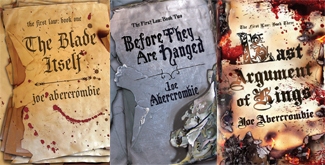
Image from Wikipedia
Of all the series on this list, The First Law might be the one you’re least familiar with. A brief synopsis: Logen Ninefingers, a barbarian of the frozen North, teams up with cheery torturer Sand dan Glokta and arrogant nobleman Jazal dan Luthar to serve the great wizard Bayaz. Thing is, Bayaz might not be exactly what any of them are expecting.
This series intentionally subverts about as many common fantasy tropes as possible. Abercrombie especially enjoys drawing murky lines between the good guys and the bad. What results is a series populated with oodles of complex, compelling characters.
Also, this series is actually pretty darn funny (in a Fargo sort of way). For example, in Glokta’s first chapter, he’s constantly interrupted by various parties while trying to torture a dude. He’s even scolded by the head of his department for recklessness, which might remind folks of classic bureaucratic nonsense that accompanies many jobs. This dark humor is a refreshing addition to a genre that can at times take itself too seriously.
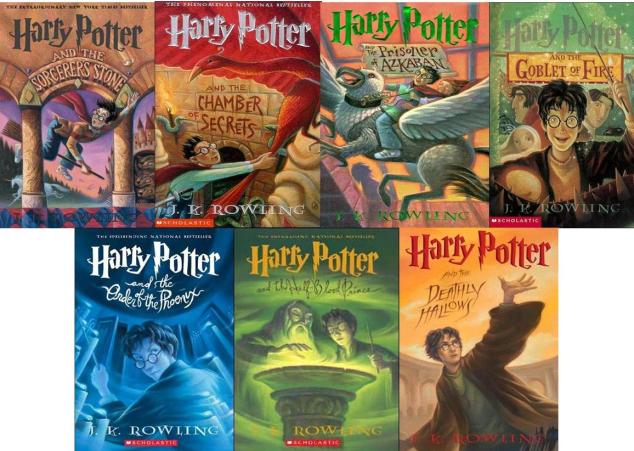
Image from Book Haven
There’s a reason everyone loves this series, and it’s not just because of Alan Rickman. Harry Potter has an astounding cast of interesting characters, sharp plotting, and a satisfying series arc.
One of the series’s greatest strengths is its academic setting. Since many readers are currently or have been enrolled in school themselves, it’s easy to relate to Harry. Sure, maybe you haven’t competed in a life-threatening Triwizard Tournament. But you’ve likely gotten pretty stressed about an upcoming test (even if it wasn’t to become an Auror).
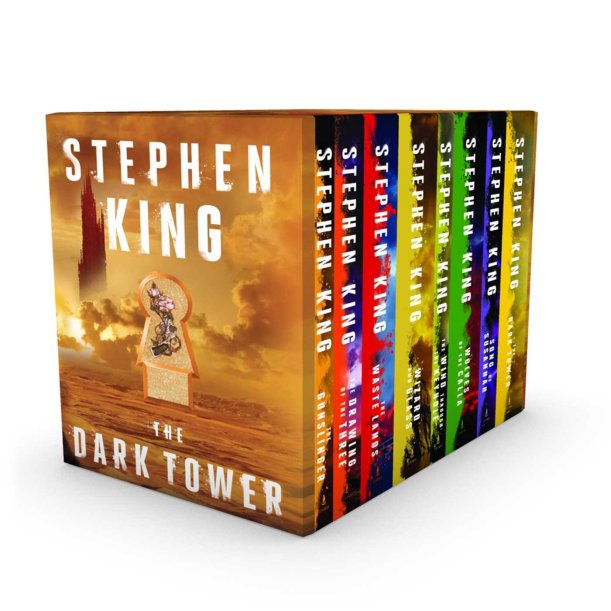
Image from Amazon
Some might debate whether or not The Dark Tower is fantasy, but this is my list and you can’t stop me. (Full disclosure: I haven’t actually finished this series; I’m currently on book four. But see above note about this being my list and all.)
Set in a desolate desert landscape, The Dark Tower chronicles the adventures of Roland Deschain, the last living gunslinger from an extinct line. He’s the archetypical man with no name who wanders the land in search of the Dark Tower, the point at which all worlds converge.
This multi-world theme is the coolest aspect of the series. From page one, you’ll notice many elements of Roland’s world correspond with our own. For example, a saloon piano player plays a song you might know: “Let It Be.” And yet in Roland’s world, it’s just a folk standard—no one’s ever heard of The Beatles.
Another thing: alternate realities. When a particular character dies (no spoilers) the series timeline splits. This creates a paradox in which two realities exist simultaneously. Which kind of drives people nuts. So cool.
For fans of Stephen King, there’s even more to love. That’s because this series is packed with easter eggs from all his other novels. You’ll notice little references to many of his other famous novels, including ‘Salem’s Lot, The Shining, and It.
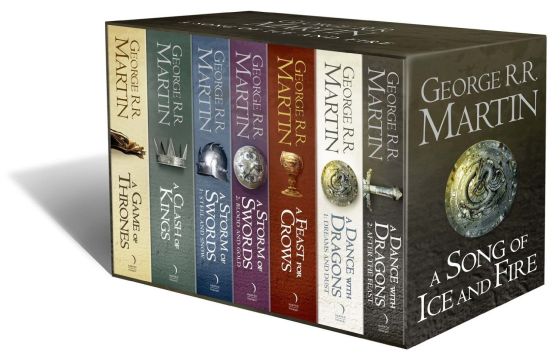
Image from winteriscoming.net
Expecting this at number one? Listen, this ranking thing is tough. Don’t be too hard on me!
I’m sure you’ve seen HBO’s wildly popular adaptation, but I’ll give you a synopsis anyway: The kingdom of Westeros is in turmoil. Royal families all vie for control of the Iron Throne. Lots of sex and bad language.
This series is sick. Martin writes some of the all-time most memorable characters in fantasy, and dare I say, even literature itself. The plot is entirely character driven, and each event is propelled forth with excitement and intrigue. Plus, anyone can die at any moment, which gives the series a very real sense of menace.
Martin’s series has redefined modern fantasy. He’s been hugely successful at eschewing the clear morals and idyllic landscapes of The Lord of the Rings in favor of grittiness and brutality. It can be exceedingly grim at times, but it also leads to some really compelling reading. It’s amazing how Martin seeds events in early volumes which don’t come to fruition until two or even three volumes later. There are literally entire message boards composed of fan theories about what’s happening and what’s going to happen. Amazing stuff. And people wonder why it takes him so long to write these things.
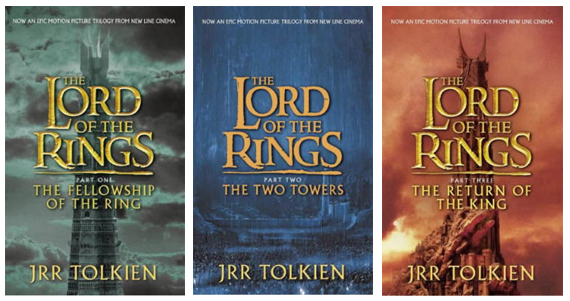
Image from Adazing
Yup, it’s still the GOAT. The Lord of the Rings is the foundational text of modern epic fantasy literature.
As with these other series, The Lord of the Rings features a huge cast of endearing characters. Though they’re not as diverse or distinct as those in say, A Song of Ice and Fire, Tolkien’s creations still stand the test of time. Each has interesting dramatic conflict and each plays an important role in the story. Plus, I’d argue that some of Tolkien’s greatest characters, such as Gandalf, Gollum, and Samwise Gamgee, have entered into literature’s all time greatest.
The setting is also magnificent. Middle-Earth is perhaps one of the most well-realized worlds ever put onto paper. Each structure has history; every location has a story; every other page has a song. Okay, I might be exaggerating with that last one, but still. Whether or not you love the pages and pages of wandering through the setting, it’s difficult to deny the depth of imagination here.
And how about the languages? Countless post-Tolkien fantasy authors have created alternate languages, yet it’s obvious that theirs have little basis in linguistics. Remember, Tolkien himself was a professor of language. In fact, some have speculated that he wrote LOTR more or less as an excuse to create his own languages. Therefore, the words in his works have real depth. There’s a functioning system behind these names—not just someone making up words that sound exotic.
No, The Lord of the Rings is not a perfect series. There’s a glaring shortage of female characters. The treatment of ethnicity and race can be troubling at times. We’re not talking about H.P. Lovecraft here, though I do feel that some elements of the book have not aged well into our modern world. No, it isn’t perfect. But I still believe this trilogy is the foundational text for epic fantasy literature. There’s tons to enjoy and tons to love.
Okay, that’s my list. What do you think? What did I get wrong? What did I forget? What would you leave off entirely? Usually I hate ending blog posts with a call to comment, but really. Comment on this one. I want to hear from you!
Kyle A. Massa is a speculative fiction author living somewhere in upstate New York with his wife and their two cats. His stories have appeared in numerous online magazines, including Allegory, Chantwood, and Dark Fire Fiction. His debut novel, Gerald Barkley Rocks, is available now on Amazon Kindle.
42.652579-73.756232






















